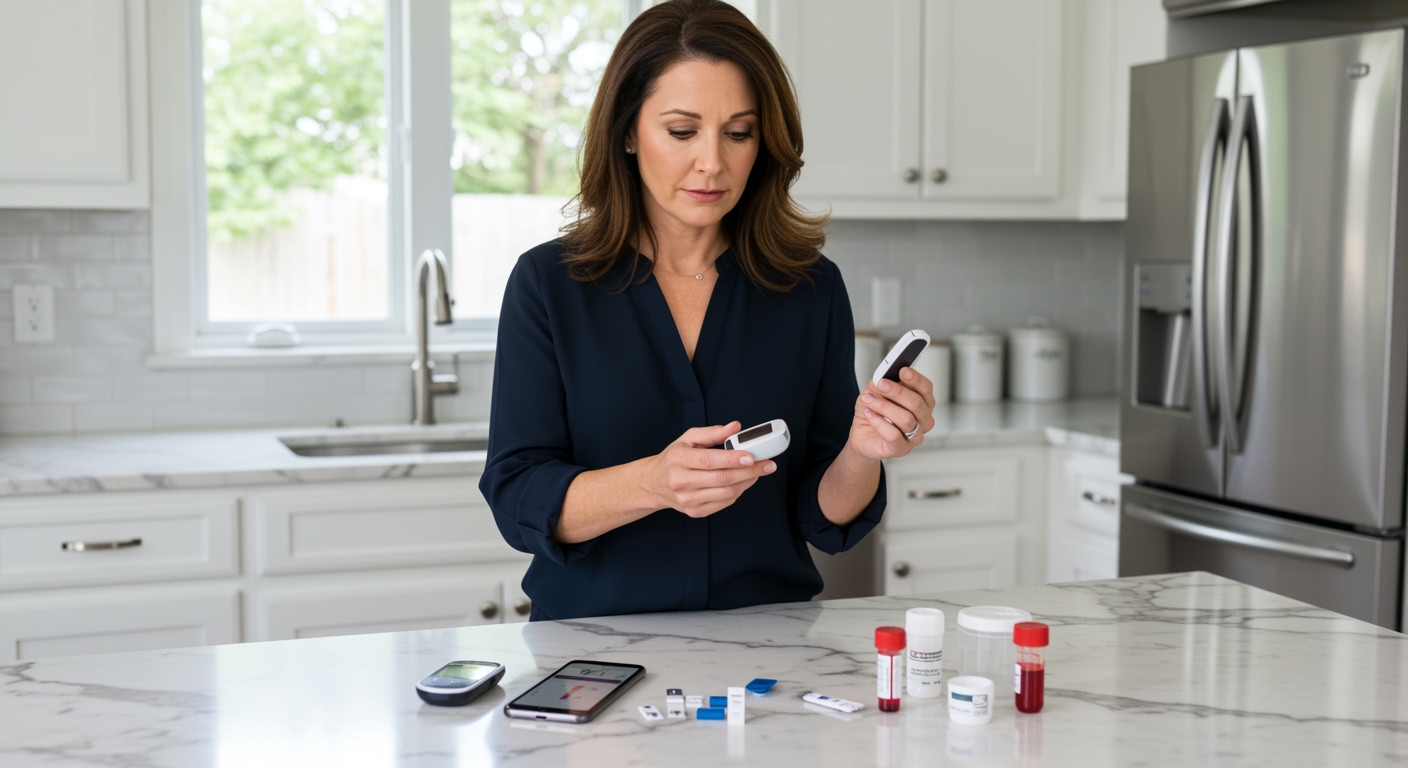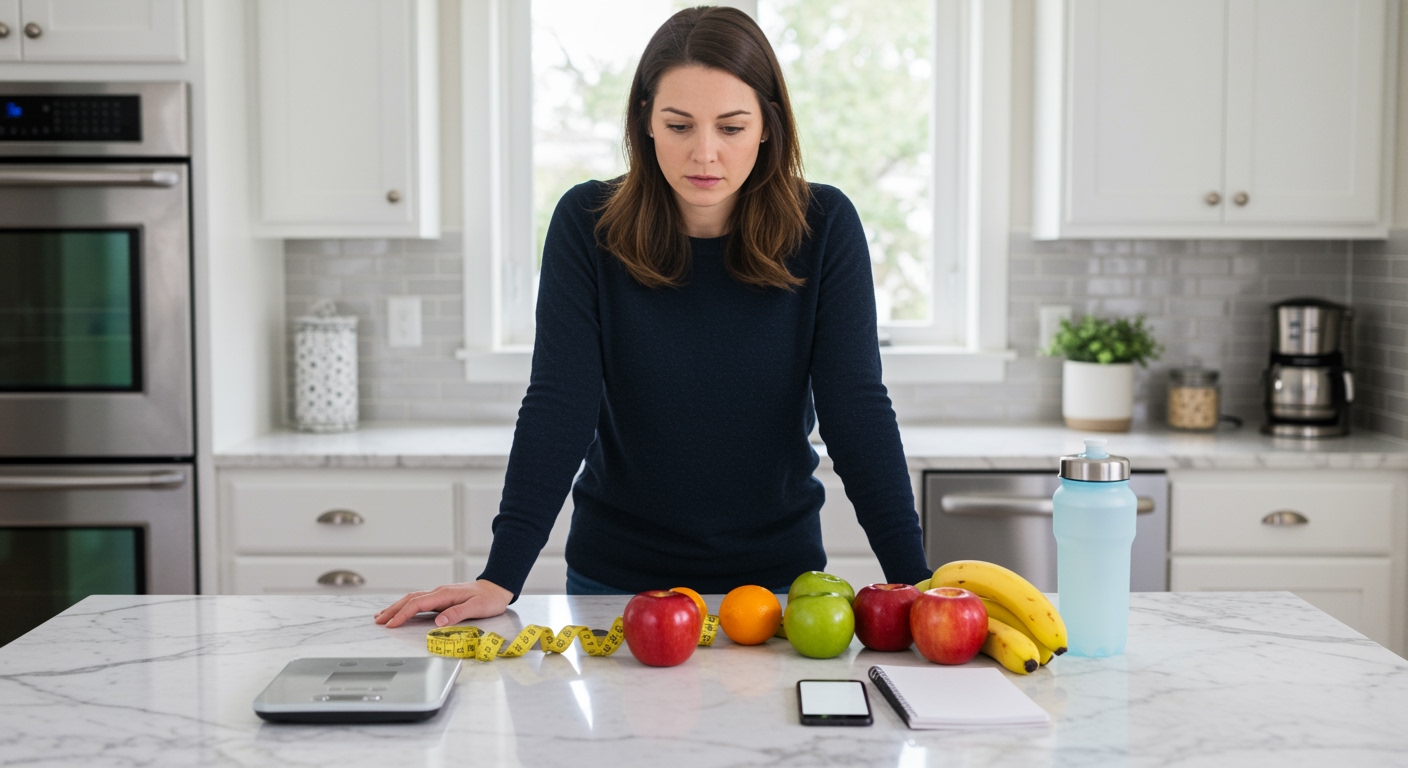✪ Key Highlight: New AI technology detects hidden diabetes risk even when standard HbA1c blood tests show completely normal results.
Introduction
Your doctor says your blood sugar is perfect, but you could still be heading toward diabetes.
A groundbreaking study published in Nature Medicine reveals that artificial intelligence can spot hidden diabetes risk even when traditional tests like HbA1c show normal results.
Hi, I’m Abdur, your nutrition coach and today I’m going to analyze this revolutionary research that could change how we detect diabetes risk in millions of people worldwide.
How Does This AI Technology Actually Work?
Researchers from Scripps Research Digital Trials Center created an AI model that analyzes multiple data sources simultaneously.
The system combines continuous glucose monitoring data with genetic information, lifestyle factors, and gut microbiome profiles.
Unlike traditional HbA1c tests that measure average blood sugar over three months, this AI tracks glucose spikes minute by minute.
The technology calculates six important metrics including average glucose levels, time spent in high blood sugar ranges, and spike duration.
Machine learning algorithms then process this complex data to create a personalized risk score for each individual.
This approach reveals patterns that standard blood tests completely miss, especially in people with seemingly normal results.
✪ Pro Tip: Continuous glucose monitors track real-time blood sugar changes that single-point blood tests cannot detect.
What Did The Research Study Actually Find?
The study included 347 participants from across the United States who completed the research entirely from home.
Among the participants, 174 had normal blood sugar, 79 were prediabetic, and 94 had type 2 diabetes.
The most shocking discovery was that people with identical HbA1c results showed vastly different actual diabetes risk levels.
Some individuals with normal-looking lab results had much higher risk than others with similar test scores.
The AI model found clear differences in glucose processing between normal, prediabetic, and diabetic participants that traditional tests missed.
Nearly half of the study participants came from groups typically underrepresented in medical research, making the findings more applicable to diverse populations.
✪ Fact: HbA1c tests only show average blood sugar over three months but miss dangerous daily glucose spikes.
Why Do Traditional Blood Tests Miss Hidden Diabetes Risk?
HbA1c tests measure glycated hemoglobin, which reflects average blood sugar levels over the past three months.
This averaging effect can hide dangerous glucose spikes that occur after meals or during stress.
Your body might handle glucose normally most of the time but struggle with post-meal spikes that traditional tests never capture.
Individual genetic variations affect how your body processes sugar, but standard tests ignore these crucial differences.
Your gut microbiome also influences glucose metabolism in ways that single blood draws cannot reveal.
Lifestyle factors like sleep patterns, stress levels, and meal timing create glucose patterns that only continuous monitoring can detect.
✪ Note: Post-meal glucose spikes can damage blood vessels even when fasting blood sugar appears completely normal.
What Does This Mean For Your Health Right Now?
This research suggests that millions of people might have hidden diabetes risk despite normal blood test results.
If you have a family history of diabetes, normal HbA1c results might not tell the complete story about your risk.
Consider discussing continuous glucose monitoring with your healthcare provider, especially if you have other risk factors.
Pay attention to how your body responds to different foods, even if your annual blood work looks perfect.
Focus on preventing glucose spikes through balanced meals that combine protein, healthy fats, and fiber with carbohydrates.
Regular physical activity helps your muscles use glucose more efficiently, reducing dangerous post-meal spikes.
✪ Pro Tip: Eating protein and fiber before carbohydrates can significantly reduce post-meal glucose spikes.
The Bottom Line
This groundbreaking research proves that traditional diabetes screening methods miss crucial risk factors in millions of people.
Your normal blood test results might be hiding a diabetes time bomb that only advanced AI technology can currently detect.
What questions do you have about hidden diabetes risk or continuous glucose monitoring? Share your thoughts in the comments below and let me know how this research might change your approach to diabetes prevention.
References
At NutritionCrown, we use quality and credible sources to ensure our content is accurate and trustworthy. Below are the sources referenced in creating this article:
- American Diabetes Association: Novel Artificial Intelligence Models Detect Type 1 Diabetes Risk
- Stanford Medicine: AI Spots Hidden Diabetes Risk
- CareEvolution: MyDataHelps Platform Powers AI Study
- Nature Scientific Reports: AI Models for Diabetes Risk Detection
- News Medical: AI Spots Hidden Diabetes Risk When Tests Look Normal





